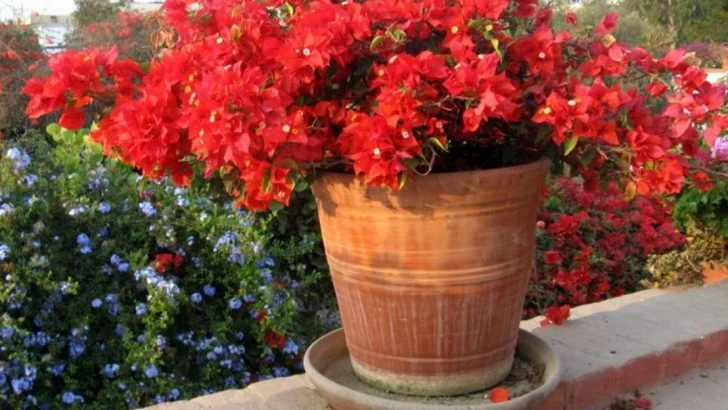Bougainvillea is a showstopper with its vibrant, papery bracts and fast-growing nature, but growing it in pots requires a slightly different approach than planting it in the ground. When done right, you’ll enjoy cascades of color on patios, balconies, and small garden spaces without worrying about invasive growth.
The key to success starts with choosing the right container—terracotta or well-draining pots are best, as they prevent soggy roots. Bougainvillea thrives on neglect when it comes to watering, preferring dry conditions between deep soaks. And don’t overdo the fertilizer—too much nitrogen leads to lush green leaves instead of flowers.
Since these plants love full sun, place your pots where they’ll get at least 6 hours of direct sunlight daily. If you’re in a cooler climate, consider a dwarf variety that’s easier to move indoors during winter. With a few smart care strategies, your potted bougainvillea will reward you with bold, long-lasting color season after season!
Choosing the Right Container
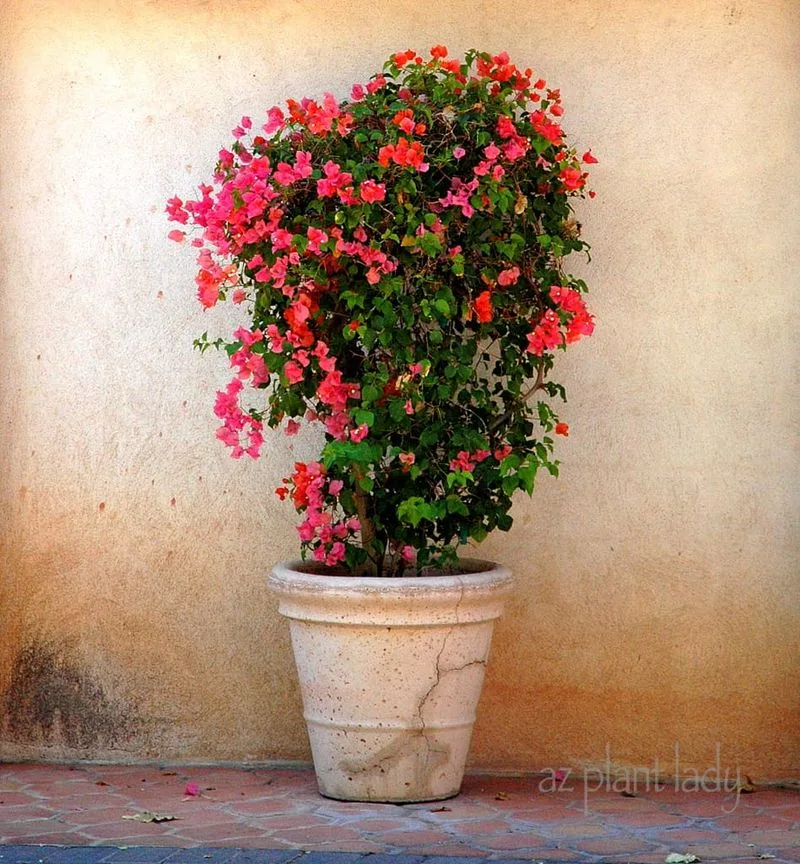
The choice of container is crucial for bougainvillea. Opt for a medium-sized terracotta pot, ideal for its breathability and moisture regulation. This material prevents over-watering, a common issue in container gardening. Ensure the pot has drainage holes to avoid waterlogged soil, which can lead to root rot. Bougainvillea enjoys being slightly root-bound, so resist the urge to upsize too quickly. With the right pot, your plant will have a strong foundation to flourish.
Selecting Suitable Soil
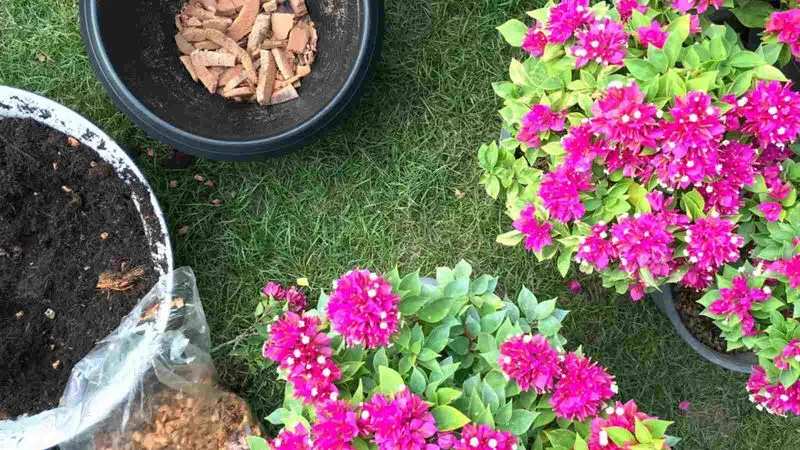
Bougainvillea thrives in well-draining soil. Create an ideal mix by combining potting soil with perlite and sand. This blend promotes drainage and prevents compaction, ensuring roots receive ample air. Avoid heavy clay or garden soil as they retain excess moisture. Test the soil’s drainage by watering it and observing how fast it seeps through. Fast drainage is key to preventing root rot. A well-prepared soil mix sets the stage for vigorous growth.
Understanding Light Requirements
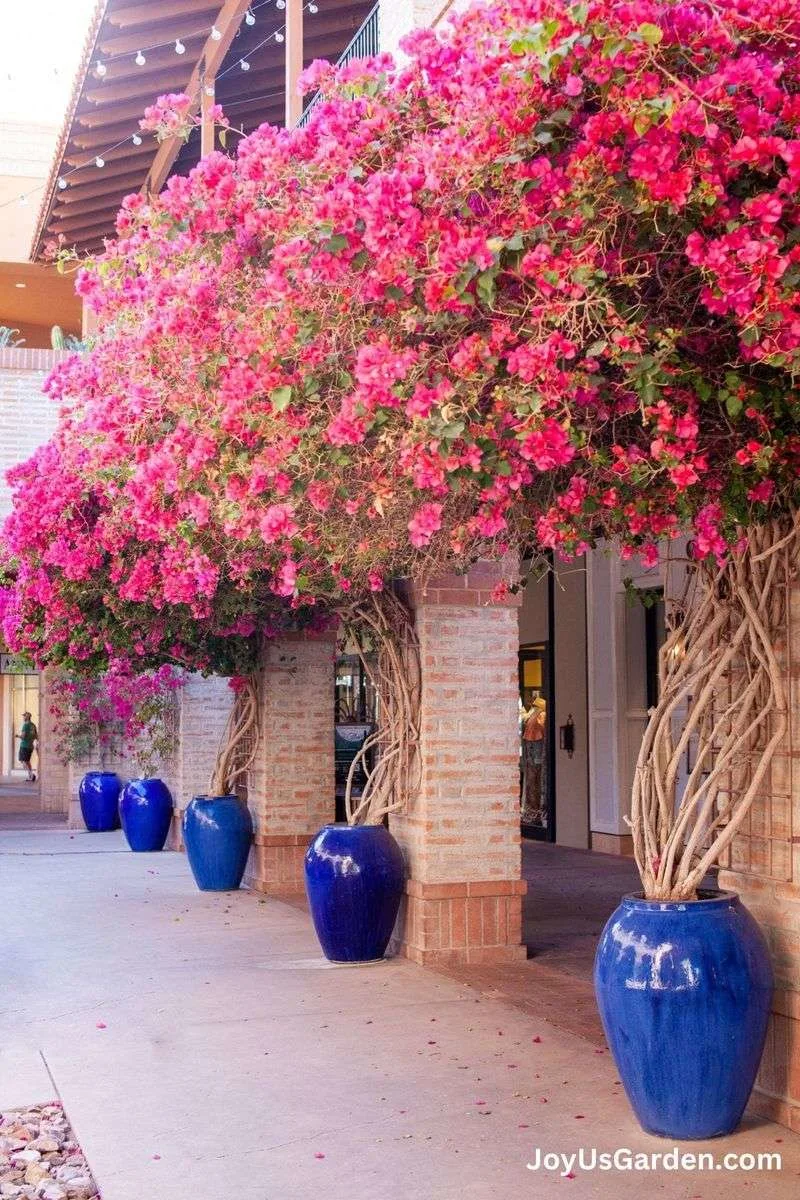
Sunlight is vital for bougainvillea, demanding at least 5-6 hours of full sunlight daily. Position your pots on a south-facing balcony or patio for maximum exposure. Insufficient light results in fewer blooms and leggy growth. If indoor placement is necessary, choose the sunniest spot available. Consider rotating the pots periodically to ensure even light distribution. With proper lighting, expect a cascade of vivid flowers that are a true visual feast.
Watering Wisely
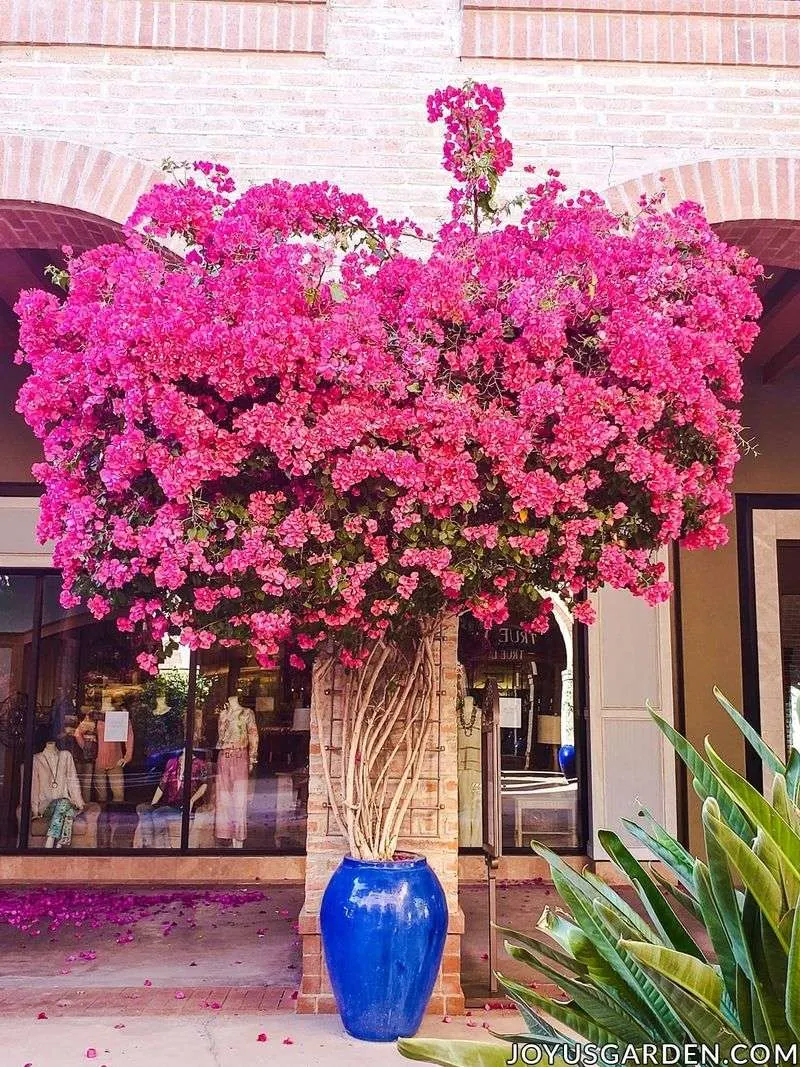
Watering bougainvillea requires a balance. Allow the top inch of soil to dry out before re-watering. During growing season, water thoroughly but infrequently. Over-watering is a common pitfall, leading to root rot. Adjust frequency based on pot size and climate. In cooler months, reduce watering as plant growth slows. Observing the plant’s response will guide you in honing the perfect watering schedule. This careful approach ensures healthy, vibrant growth.
Pruning for Health and Shape

Pruning maintains bougainvillea’s shape and encourages flowering. Use sharp pruning shears to trim back long branches, focusing on dead or crossing branches. Late winter or early spring is ideal for pruning. Cutting back encourages new growth and more blooms. Regular pruning also prevents legginess, keeping the plant compact and tidy. Always sanitize tools to prevent disease transfer. Through thoughtful pruning, you’ll achieve a stunning, bushy display.
Feeding for Vibrant Blooms
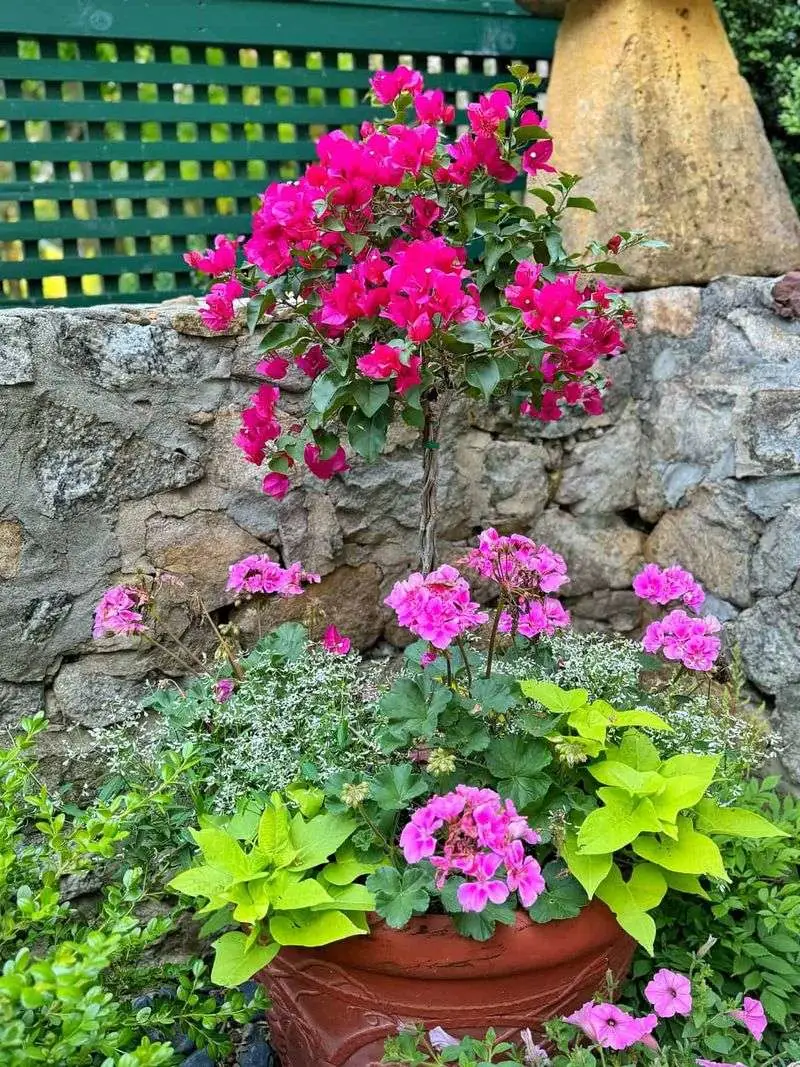
Fertilizing is essential for prolific flowering. Use a balanced, slow-release fertilizer tailored for flowering plants. Apply sparingly during the growing season, following package directions. Over-fertilization can harm roots and reduce blooms. Monitor the plant’s response, adjusting the amount as needed. Incorporate organic matter like compost to boost soil nutrition. This balanced feeding regimen fuels vibrant, long-lasting blooms without overwhelming the plant’s natural growth rhythm.
Managing Pests and Diseases
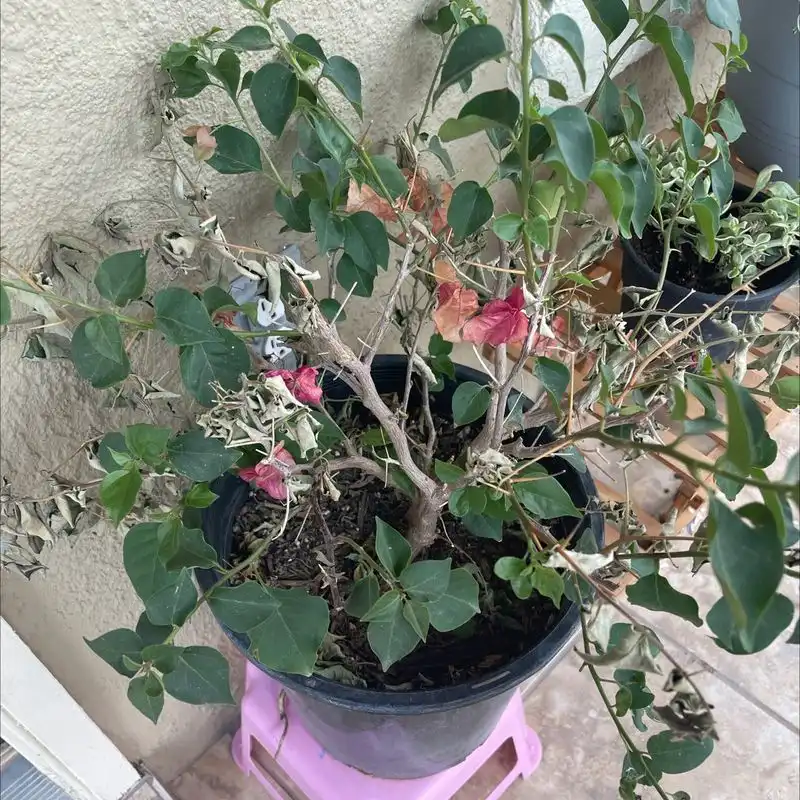
Bougainvillea can fall prey to pests like aphids and spider mites. Regularly inspect leaves and stems for signs of infestation. If detected, apply organic insecticidal soap or neem oil. Maintaining plant health through proper watering and feeding reduces pest susceptibility. Diseases, though less common, can occur in overly damp conditions. Ensure proper drainage and airflow to prevent fungal issues. Prompt action and good care ward off most problems, keeping your plant robust.
Repotting with Care
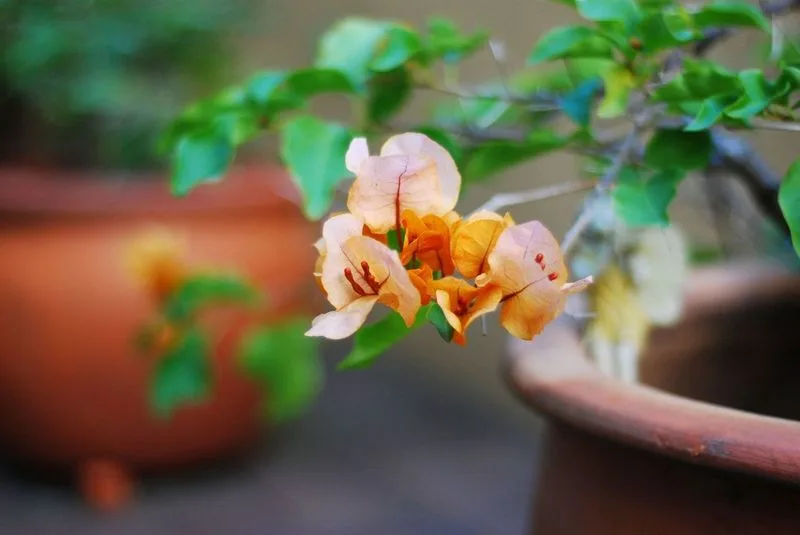
Repotting is occasionally necessary as bougainvillea grows. Choose a slightly larger pot only when roots become tangled and growth slows. Gently loosen the root ball when transferring, removing excess soil. Refresh with new potting mix, ensuring the plant is at the same depth. Repotting is best done in early spring before new growth begins. This careful process revitalizes root health without shocking the plant. With mindful repotting, expect continued vibrant growth.
Overwintering Strategies

In colder climates, bougainvillea needs protection from frost. Before the first freeze, move pots indoors to a bright location. Reduce watering, allowing the plant to rest. Some leaf drop is normal during this period. If indoor space is limited, create a microclimate with frost blankets or cloches. Gradually reintroduce outdoor conditions in spring. Proper overwintering ensures the plant’s survival and readiness to bloom afresh when the weather warms.
Encouraging a Second Bloom
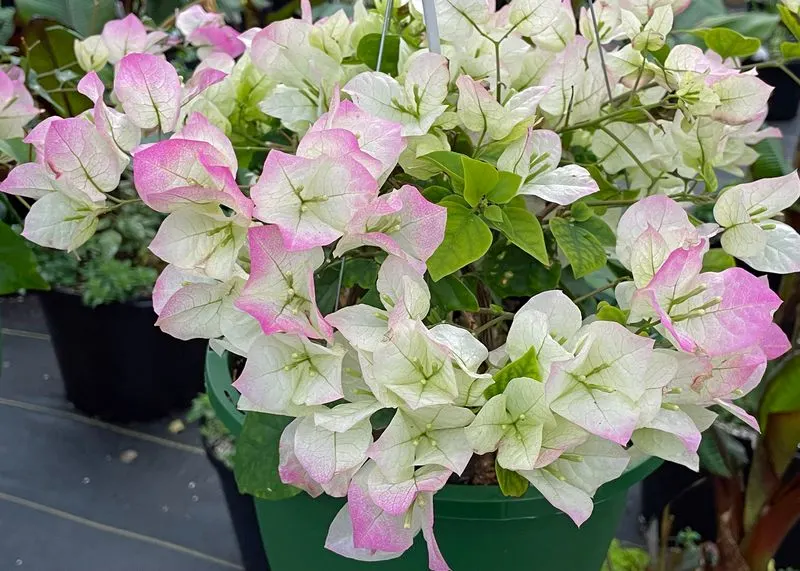
After the initial bloom, encouraging a second flowering involves strategic pruning and feeding. Trim spent blooms and lightly feed the plant with a phosphorus-rich fertilizer. This stimulates new growth and bud formation. Adequate sunlight and proper watering are crucial during this phase. Observe the plant for signs of stress or nutrient deficiency, adjusting care as needed. With patience and attention, a second wave of vibrant flowers can be achieved, extending the floral display.
Supporting with Structures
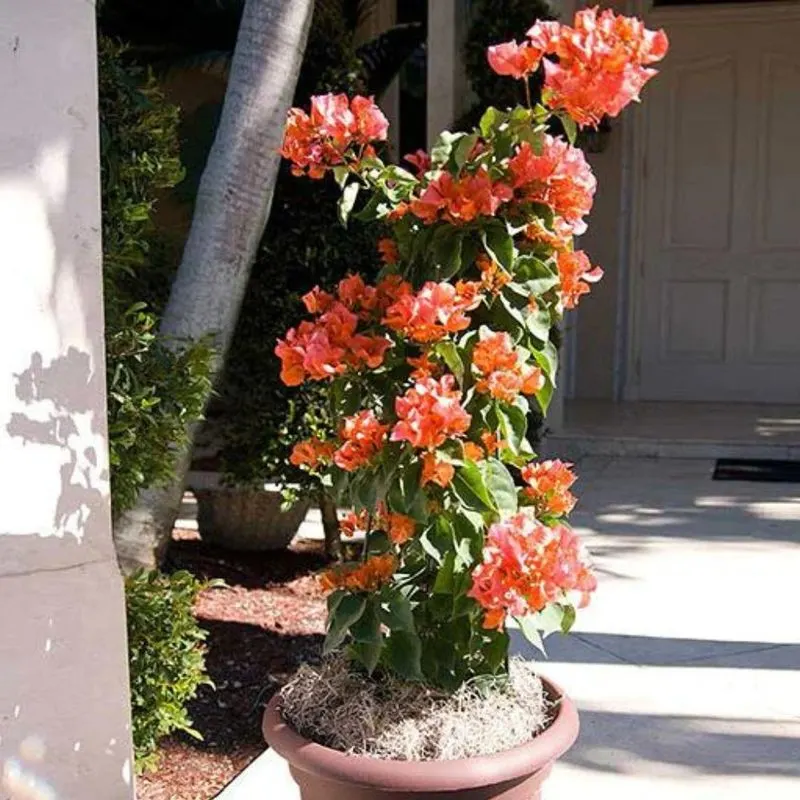
Supporting bougainvillea with structures helps manage growth and enhances aesthetic appeal. Use trellises or stakes to guide the plant’s growth. Secure branches with soft ties to prevent damage. This support encourages upward growth, displaying blooms prominently. It also prevents wind damage, which can be common in potted plants. Ensure the support structure is sturdy and stable. With thoughtful support, bougainvillea transforms into a captivating focal point in any setting.
Handling Heat Waves
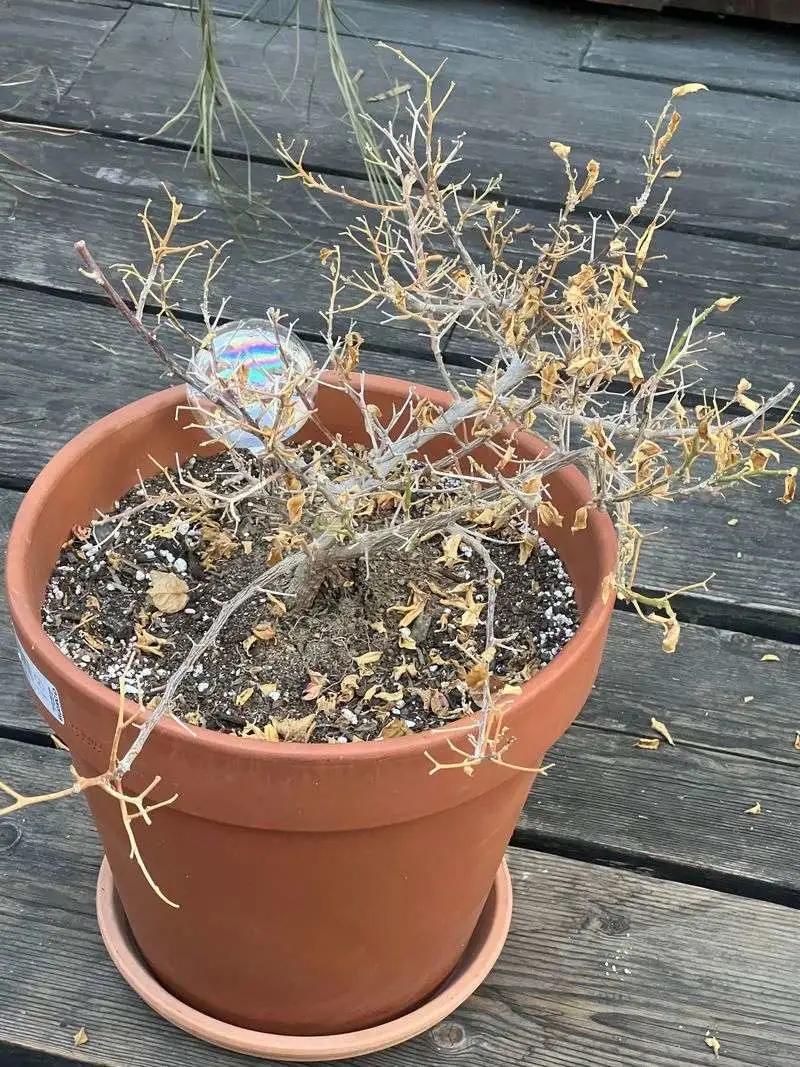
Bougainvillea loves sun but intense heat can stress it. During heat waves, provide partial shade by drawing curtains or using shade cloth. Water early in the morning to help roots absorb moisture before the intense sun hits. Mulching can also conserve soil moisture. Monitor the plant for signs of heat stress like wilting. Adjust watering frequency based on temperature and humidity. Through proactive measures, bougainvillea remains vibrant even in extreme heat.
Creating Colorful Displays
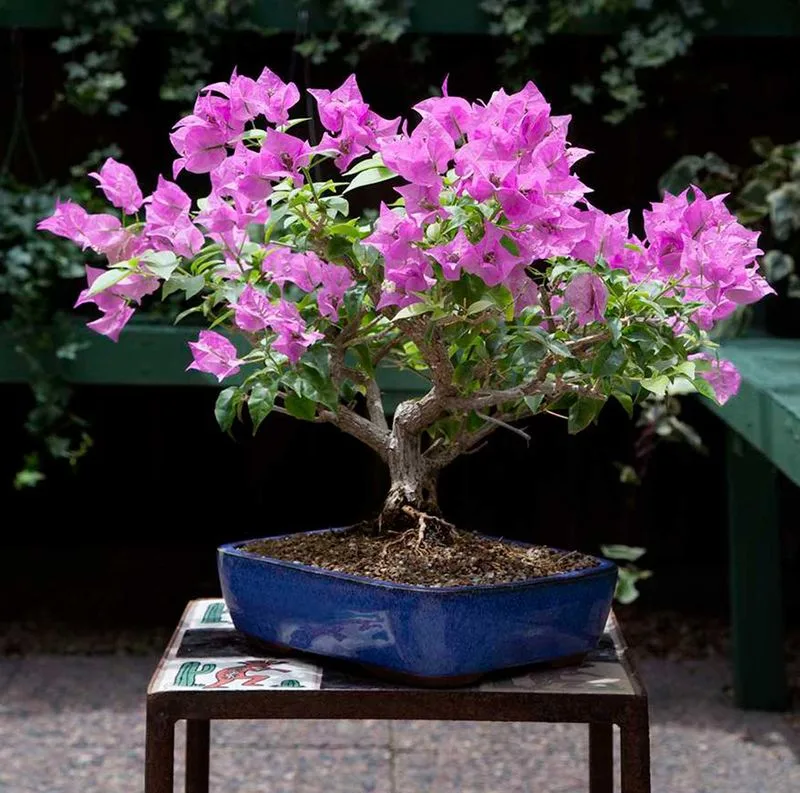
A vibrant display can be achieved by mixing bougainvillea varieties in different colors. Experiment with shades of pink, red, and purple to create a stunning visual. Consider pot arrangements that complement blooms and foliage. Grouping several pots together maximizes impact. Ensure each variety receives adequate sunlight and care based on its specific needs. This artistic approach transforms a simple patio into an eye-catching garden, showcasing bougainvillea’s diverse beauty.
Choosing Compact Varieties
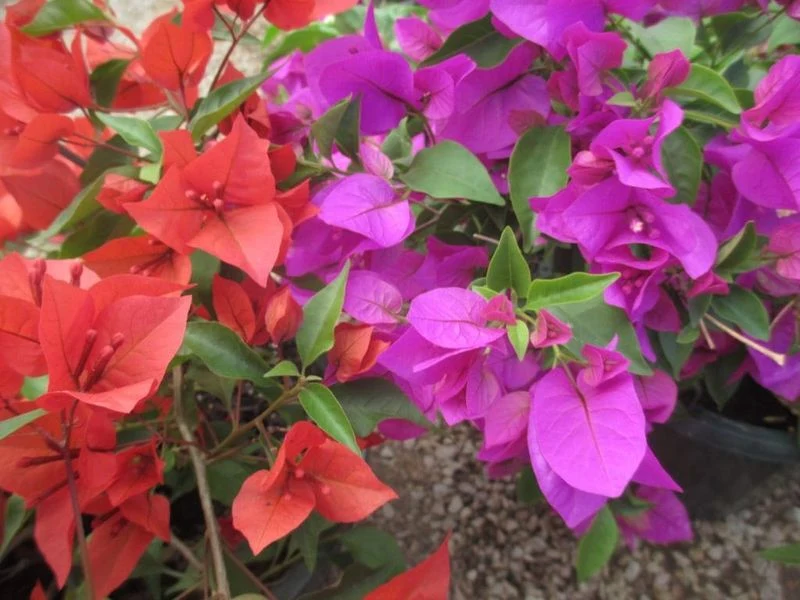
Selecting compact varieties is ideal for small spaces. These types are bred for robust blooming in limited areas, making them perfect for balconies or small patios. Look for varieties labeled as dwarf or compact. They require less pruning and are easier to manage in pots. Despite their size, these plants offer vibrant displays. With the right choice, even the smallest space can be filled with the bright colors bougainvillea is known for.
Combining with Companion Plants
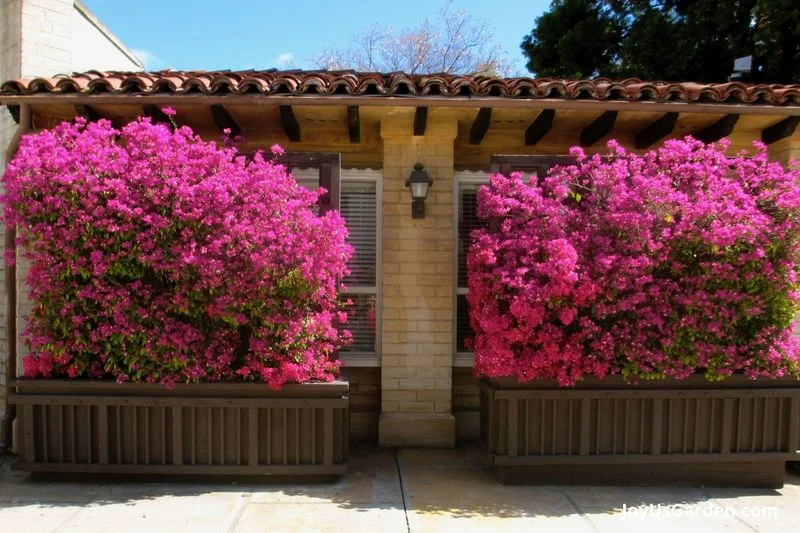
Pairing bougainvillea with companion plants adds visual interest and can benefit growth. Choose plants with similar sunlight and watering needs. Consider small flowering or foliage plants like lantana or succulents. These companions can help fill gaps and provide a fuller look. Ensure the pot is large enough to accommodate multiple plants without overcrowding. This harmonious combination not only enhances the visual appeal but can also promote a healthier growing environment.
Ensuring Proper Air Circulation
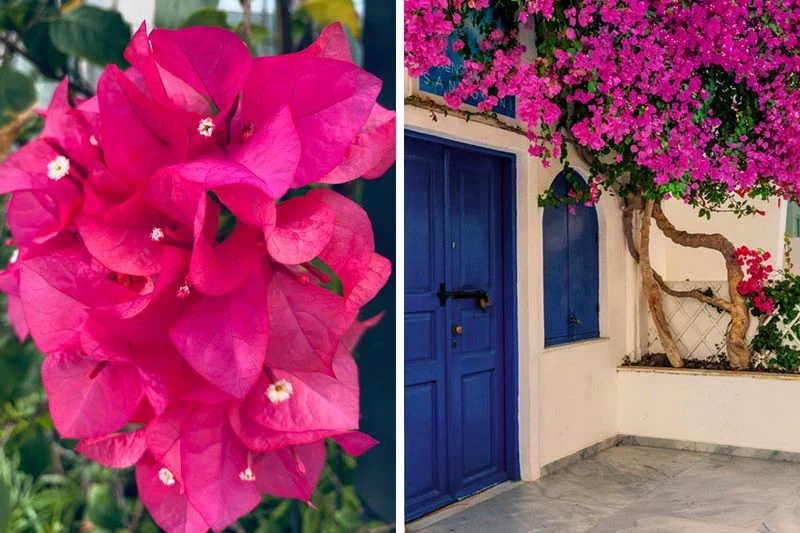
Good air circulation is crucial for preventing fungal diseases in bougainvillea. Space pots adequately to allow air to move freely around each plant. Avoid placing pots too close to walls or other barriers where air flow might be restricted. Regularly clean up fallen leaves or debris to maintain a healthy environment. By ensuring proper circulation, you reduce the risk of disease and promote robust health. It’s a simple yet effective way to keep your plants thriving.
Adjusting Care Through Seasons
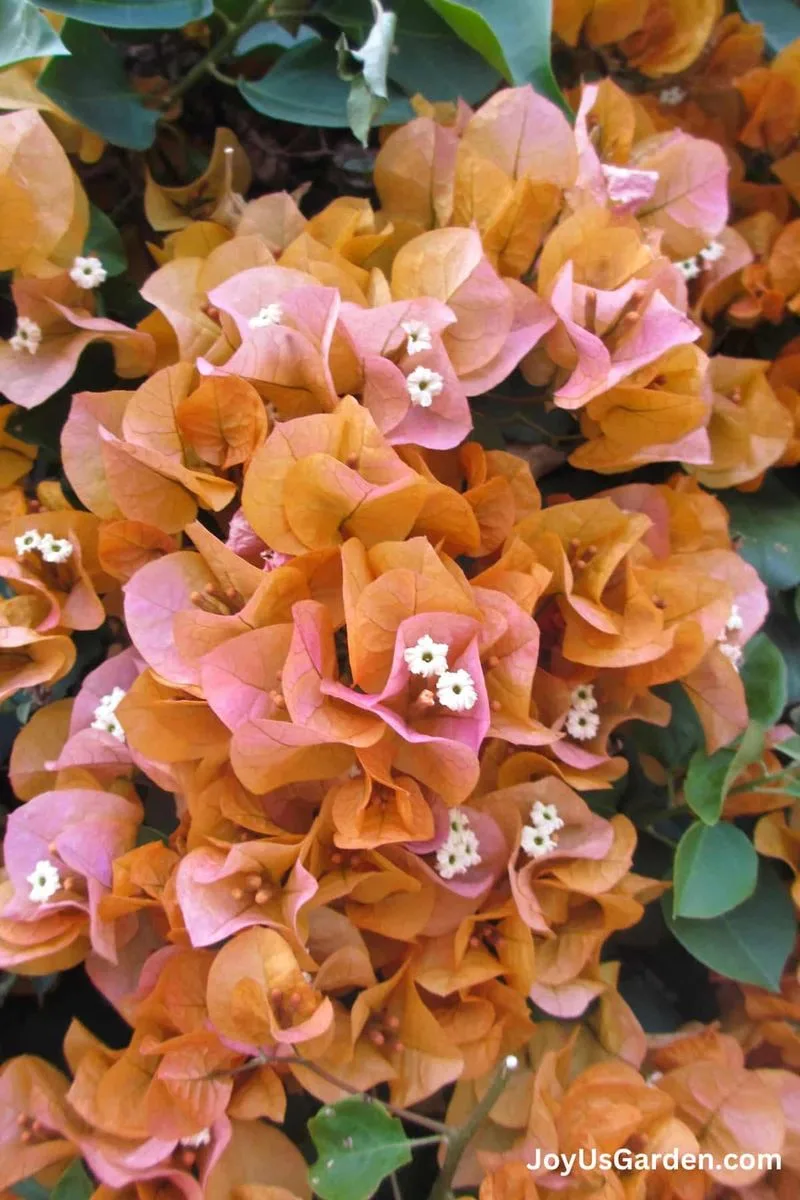
Adapt care practices with the changing seasons to ensure bougainvillea’s health. Increase watering and feeding during active growth in spring and summer. As cooler months approach, reduce water and halt fertilization to allow rest. Monitor for climate-specific changes such as humidity shifts or unexpected frosts. Tailoring care to each season supports the plant’s natural cycle. With thoughtful adjustments, bougainvillea remains a vibrant presence throughout the year, responding well to nature’s rhythms.
Appreciating Patience and Persistence
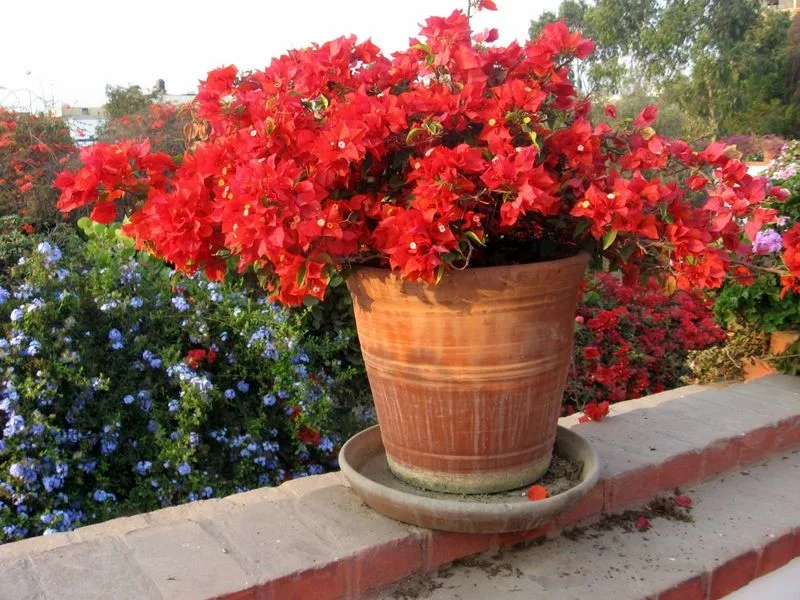
Growing bougainvillea in pots requires patience and persistence. It takes time to understand the plant’s preferences and to see the results of your care. Celebrate small victories, like new blooms or healthy growth. Keep learning and adjusting techniques as needed. Consistent care will be rewarded with spectacular displays of color. Remember, a well-tended bougainvillea is a testament to your dedication. Enjoy the process and the vibrant beauty that unfolds over time.

